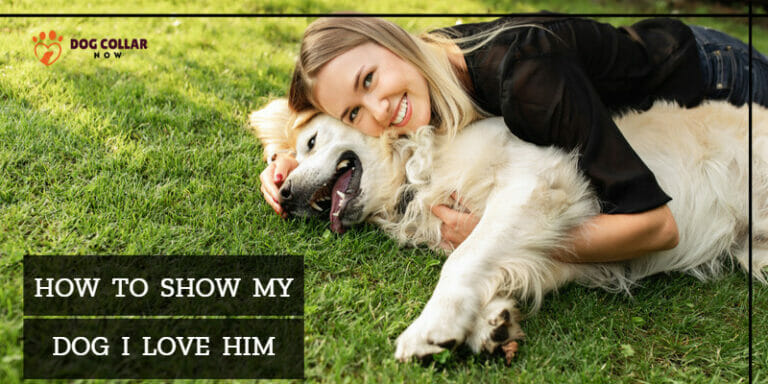How Does A Shock Collar Work – Mechanism Behind
Calling all curious pet parents! Have you ever wondered how those nifty shock collars actually do their thing? Get ready for an electrifying journey into the canine training wonders as we unravel the magical secrets!
But how does a shock collar work? At its core, this device consists of a collar fitted around the dog’s neck which is connected to a handheld remote control. The remote control allows the owner or trainer to administer a shock to the dog when necessary. The intensity of the shock can be adjusted based on the desired level of discomfort or pain inflicted on the dog.
From the science behind its gentle jolts to the fascinating mechanics that bring it to life, I’ll uncover the secrets of this remarkable tool. So, buckle up, furry friends, because we’re about to unveil the enchanting wizardry of how shock collars work their magic in shaping well-behaved pups!
How Does A Shock Collar Work? – The Science Behind It
The shock collar, also known as an electronic or e-collar, is a training device designed to remotely deliver an electronic stimulation, often perceived as a static shock, to a dog when they exhibit undesired behavior or fail to follow commands. The device consists of three main components:
- Collar Receiver: This component is worn around the dog’s neck and contains the electronic circuitry responsible for delivering the stimulation.
- Transmitter: Held by the dog owner or trainer, the transmitter sends signals to the collar receiver, triggering the electronic stimulation.
- Contact Points: These metal probes are in direct contact with the dog’s skin and deliver the electronic stimulation when activated.
How Does A Shock Collar Work for Training Purposes?
When used responsibly, shock collars can be effective tools for training dogs. Here’s how the training process typically works:
1. Conditioning Phase: Before using the shock collar for corrective training, it’s crucial to condition the dog to associate the electronic stimulation with a specific command or behavior. This is usually done by pairing the stimulation with a verbal command, such as “sit” or “stay,” and rewarding the dog when they comply.
2. Reinforcement: Once the conditioning phase is complete, the shock collar can be used as a form of reinforcement when the dog disobeys a command or engages in undesirable behavior. The electronic stimulation acts as a deterrent, prompting the dog to stop the undesired action and redirect their focus.
3. Timing and Consistency: Timing is paramount in using a shock collar effectively. The electronic stimulation must be delivered immediately after the undesirable behavior for the dog to make the association between the behavior and the consequence. Consistency is also crucial, as mixed signals can confuse the dog and hinder the training progress.
4. Positive Reinforcement: While shock collars can be useful for discouraging unwanted behaviors, it’s essential to combine their use with positive reinforcement techniques, such as praise, treats, or affection, to reward desired behaviors and foster a trusting bond between the dog and the trainer.
Shock Collar Intensity Levels
Shock collars often come with multiple intensity levels to cater to dogs of various sizes and temperaments. Understanding these intensity levels is crucial to ensure safe and effective training.
Adjustable Shock Intensity: Most shock collars allow the trainer to adjust the stimulation intensity. This flexibility allows for personalized training that is both effective and humane. For smaller or more sensitive dogs, lower intensity levels are recommended, while larger or more stubborn dogs may require higher intensity for effective training.
Progressive Intensity: Some shock collars offer a progressive stimulation feature, wherein the intensity increases gradually if the dog continues the undesired behavior. This feature helps reinforce the training message without causing unnecessary distress to the dog.
Audible or Vibration Cues: In addition to electronic stimulation, some shock collars provide audible tones or vibration cues as milder alternatives to static shocks. These options are particularly helpful for dogs that are more sensitive to electronic stimulation.
Ensuring Safety and Responsible Use of Shock Collars
While shock collars can be effective training tools, their use requires responsibility and proper understanding. Here are essential safety considerations:
- Professional Guidance: If you’re new to shock collar training, it’s advisable to seek guidance from a professional dog trainer who can demonstrate proper usage and techniques.
- Correct Fit: Ensure the shock collar fits snugly but comfortably on your dog’s neck. Avoid prolonged wear to prevent skin irritation.
- Avoid Continuous Stimulation: Shock collars should never be used for continuous or prolonged stimulation. Use them as a brief, corrective measure to curb unwanted behaviors.
- Consistent Training: Combine shock collar training with consistent positive reinforcement to ensure your dog associates the stimulation with specific commands.
- Avoid Overuse: Overusing the shock collar can desensitize your dog and lead to behavioral issues. Limit its use to specific training scenarios.
- Monitor Your Dog: Always observe your dog’s reaction to the stimulation and adjust the intensity accordingly. If your dog becomes excessively stressed or fearful, discontinue the use of the shock collar.
Benefits And Risks Of Using A Shock Collar
let’s have a chat about the good and not-so-good sides of using shock collars for our fur babies.
Benefits Of Using A Shock Collar:
- Effective in correcting unwanted behaviors.
- Experience customizable static stimulation levels of shock to ensure your furry friend’s utmost comfort during training.
- Quick and clear communication during training.
- Can be helpful for certain training challenges.
Risks Of Using A Shock Collar:
- Some dogs may find the shocks anxiety-inducing or worrisome.
- Possible negative impact on emotional well-being.
- Improper use can lead to unintended consequences.
- May not be suitable for all dogs or training situations.
As responsible pet parents, it’s important to weigh the benefits and risks carefully before using a shock collar. Always consider gentler training methods first and prioritize your dog’s safety and well-being.
Common Concerns About Using A Dog Training Collar
Now, Let’s talk about some common concerns regarding shock collars. I get it; using them can raise a few eyebrows.
- Stress And Fear: The dog shock collar can cause stress or fear in dogs, which may result in emotional distress and even collar sores around the neck.
- Suitability: Shock collars may not be appropriate for all dogs or training situations. Each dog is unique, and what works for one may not work for another.
- Unintended Consequences: Improper use of shock collars can result in unintended consequences, such as fear-induced aggression or anxiety-related issues.
- Lack Of Positive Reinforcement: Shock collars rely on negative reinforcement, which some pet parents may find concerning.
- Safety: Ensuring the safety and well-being of our furry friends is essential, and some people worry about potential harm caused by shock collars.
- Training Methods: Some pet parents prefer gentler training methods that focus on positive reinforcement and building trust with their dogs.
- Ethical Considerations: The use of shock collars raises ethical questions for some, as they aim to balance effective training with their dog’s emotional welfare.
As responsible pet parents, it’s crucial to address these concerns and carefully consider the best approach to training our beloved pups.
Conclusion
The idea is to use the shock as a deterrent to stop unwanted behaviors and redirect them toward more desirable actions.While some find it effective, it’s essential to remember that gentler training methods may be better for our furry friends. Always use bark collars responsibly and seek guidance from a professional trainer to ensure their safe and effective use. Remember, the key to successful training is patience, consistency, and prioritizing our pet’s well-being. So, let’s embrace positive reinforcement and build a strong, loving bond with our dogs!






